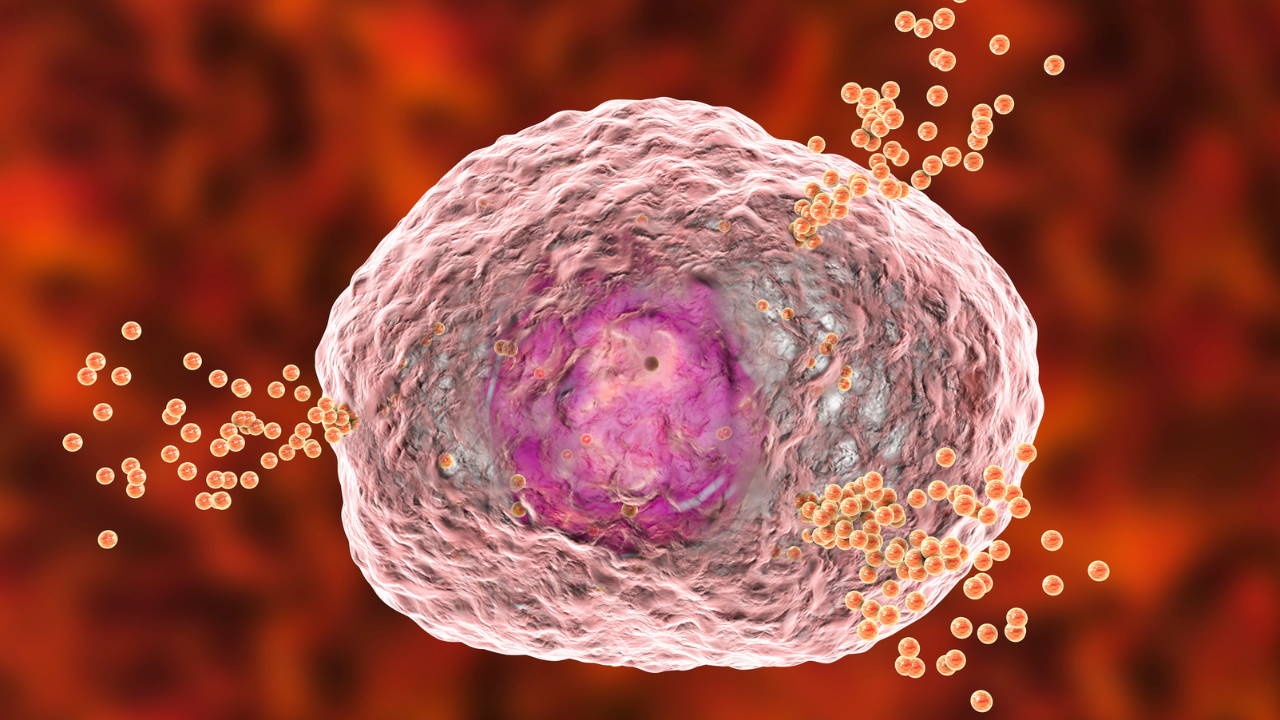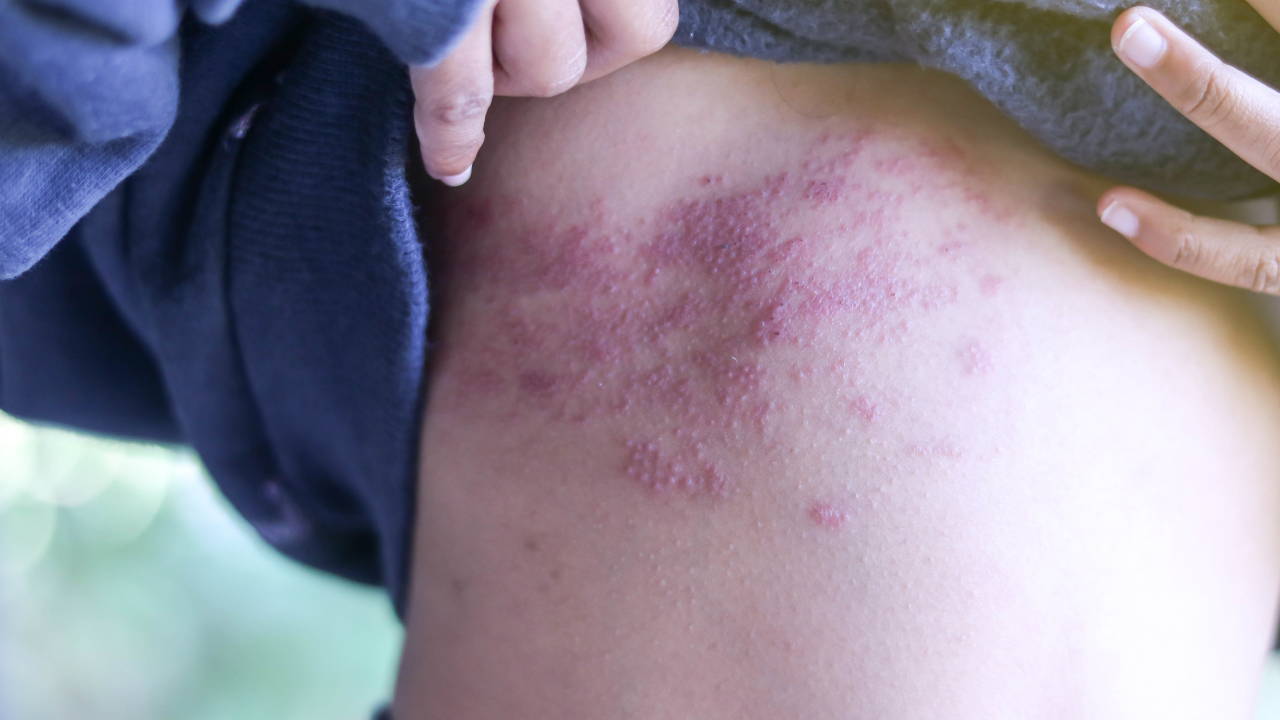The low histamine diet: why you might need it
Browse Categories

Finding out that you have a histamine intolerance may be something of a relief. Finally, an explanation for those itchy eyes and runny nose!
But you may also be wondering what to do about it.
For most people, the best solution is a low-histamine diet. But what is that exactly? What foods are low in histamine and what foods are not? What even IS histamine?
We’ll explain all that - and more.
What is Histamine?
Histamine is a chemical known as an autacoid, which means it acts like a local hormone near where it is synthesized in the body. The highest concentrations of histamine are found in your intestinal mucosa, skin, and bronchial tissues. Histamine is also present in many foods.
Scientifically speaking, histamine is a tissue amine and chemical molecule that is biosynthesized by the decarboxylation of the amino acid, histidine. The biosynthesis of histamine is catalyzed by the presence of L-histidine decarboxylase and the cofactor pyridoxal 5’-phosphate or the active form of B6. Of all biogenic amines observed in foods, the excessive levels of histamine and tyramine are considered highly toxic and can produce unwanted effects in the human body.
Biosynthesized histamine is stored in basophils, mast cells, gastric enterochromaffin cells, lymph nodes and thymus.
Histamine is involved in several physiological functions, including gastric acid secretion, lowering of blood pressure, inflammation, increased vascular permeability, cytokine production, smooth muscle contraction and vasodilation. Histamine is also synthesized in the brain, specifically in the neurons present in the posterior region of the hypothalamus.
As a neurotransmitter, it maintains wakefulness and carries impulses like pain and itching sensations. Of all G-protein-coupled receptors, H1, H2, H3 and H4 interact with histamine and activate the signal transduction pathways, thereby initiating the biological mechanisms.
Histamine also participates in local immune response, immunomodulation, hematopoiesis, day-night rhythm, wound healing effects and regulation of histamine- and polyamine-induced cell proliferation and angiogenesis in various tumor models and intestinal blood supply. As per the concentration of histamine present in the plasma, different activities are exhibited as mentioned in Table 1 below (Adapted from Mainz et al., Am. J. Clin. Nutr. 2007).
Why Do We Need Histamine?
Although an inflammatory reaction can be quite unpleasant, histamine is very important in protecting your body from potential harm. It acts like an armed guard, sounding the alarm to let your body know that something foreign has entered and that it needs to be fought off.
This causes your immune system to respond with inflammatory chemicals that help get rid of the invader - known as an allergen - that’s bothering you.
When produced during a local immune response, histamine’s main role is to cause inflammation. Its release causes your capillaries to become more permeable to white blood cells and other proteins, which allows the white blood cells to target and attack foreign bodies in the affected tissue.
As one of the most versatile molecules in your body, histamine can cause a huge range of effects depending on where it’s released.
Immune Cell Release
Histamine is produced as part of your immune system’s response to trigger inflammation. Basophils and mast cells secrete histamine when your body detects one of these invaders. These cells reside in connective tissue and act as potent effector cells of the innate immune system.
Mast cells are the major producer of histamine and express many receptors on their surface. These receptors are activated through stimulants such as allergens, complement peptides, and neuropeptides, which cause the mast cells to release various inflammatory mediators including histamine.
When released, histamine causes smooth muscle contraction in the intestines (often causing cramps and diarrhea), expansion of blood vessels (often causing low blood pressure), mucus secretion in the nasal passages and GI tract, and many other physiologic effects that are intended to fight off invaders.
Stomach Cell Release
Histamine is also released from enterochromaffin-like cells in the stomach, triggering acid secretion from parietal cells. This increases acidity in the stomach to kill off any dangerous invaders.
Brain Cell Release
Histamine is also produced in the hypothalamus. It acts as an excitatory neurotransmitter and is involved in regulating the sleep-wake cycle.
How is Histamine Broken Down in the Body?
There are two important pathways in histamine metabolism: one involves diamine oxidase (DAO) and the other involves histamine N-methyl transferase (HNMT).
DAO converts histamine into imidazole 2-acetaldehyde, followed by imidazole acetic acid and finally, imidazole acetic acid riboside is formed. Conversely, histamine is metabolized in the presence of HNMT to obtain methylimidazole acetic acid through the production of intermediate methylimidazole acetaldehyde.
It is worth noting that the conversion of histamine into different by-products is the protective role of DAO and HNMT against excess histamine, either from ingested foods or produced by the intestinal microbiota. Therefore, both enzymes DAO and HNMT help balance and maintain optimum levels of histamine in the human body.
Histamine Intolerance
Histamine intolerance - also known as histaminosis - is an impaired ability to metabolize ingested histamine. It is a disorder which originates from a decreased histamine degradation capacity in the intestine due to diminished DAO activity. This lower DAO activity results in the accumulation of histamine in plasma and creates adverse effects.
As the body’s histamine receptors are throughout smooth muscle, endothelial cells, adrenal medulla, heart, and central nervous system, an intolerance triggers a range of symptoms including nasal congestion, rhinorrhoea, the dilation of blood vessels and inflammation of airways.
Because histamine plays so many different parts in how your body functions, symptoms of histamine intolerance are broad and can easily be confused for other things, such as food allergies.
Some of the most common symptoms of histamine intolerance to be aware of include:
Digestive issues
Abdominal cramping, bloating, diarrhea, and other gastrointestinal discomforts. Histamine plays a part in breaking down food. If your body isn’t able to do this properly, you’ll end up with symptoms like gas, bloating, diarrhea, and stomach pain.
Headaches and dizziness
Histamine can cause the blood vessels in your brain to dilate, which can lead to headaches and lightheadedness.
Respiratory issues
Nasal congestion, sneezing, and other respiratory problems. Again, dilated blood vessels in the nasal passageways tend to cause sneezing and congestion. Histamine can also affect other parts of your respiratory system beyond your nose, including your airways. In extreme cases of histamine intolerance, you may have trouble breathing.
Dermatological problems
Rashes, eczema, and itchy skin are also a result of inflammatory reactions in the skin.
Cardiovascular reactions
A racing heart or palpitations is caused by histamine acting directly on cells in your heart.

Other symptoms of histamine intolerance include:
- Abdominal cramps
- Irregular menstrual cycle
- Anxiety
- Arrhythmia or increased heart rate
- Trouble falling asleep
- Difficulty maintaining body temperature
- Fatigue
- Flushing
- Headaches and/or migraines
- Hives
- Blocked nose, sinus congestion, sneezing, difficulty breathing
- Nausea, vomiting
- Swelling of tissues
- Vertigo or dizziness
What is Histamine Intolerance Caused by?
- Your body is producing too much histamine. This can happen during an immune reaction or due to a health condition such as mastocytosis, in which mast cells increase in number and as a result, cause the body to produce higher amounts of histamine.
- You are consuming high-histamine foods or drinks.
- Your body is not breaking down histamine properly. This may be due to genetics, medications, or other medical conditions. In most cases, this is due to impaired DAO activity. Studies have shown that people with histamine intolerance tend to have lower serum DAO activity.
- Poor gut health due to stress, infection, dysbiosis or inflammatory bowel diseases (such as Crohn’s disease). Inflammation in intestinal cells may lead to a decrease in DAO production. Those with histamine intolerance tend to have less “good” gut bacteria
What is Histamine Intoxication or Histamine Poisoning?
The adverse effects of histamine intoxication are listed below.
- Skin - local inflammation, edema, redness, rash, urticaria and pruritus
- Gastrointestinal tract –diarrhea, nausea and vomiting
- Hemodynamic function – hypotension
- Nervous system – headache, tingling and palpitations
How Do Genetic Mutations Affect Histamine?
The Link between DAO deficiency and the symptoms of histamine intolerance
Histamine in Food

- availability of free amino acids
- presence of decarboxylase-positive microorganisms
- ideal conditions for bacterial growth and
- decarboxylase activity
How to Treat Histamine Intolerance?
- antihistamines (histamine receptor antagonists)
- avoiding drugs/substances that inhibit DAO and HNMT enzyme activity (i.e. chloroquine, clonidine, isoniazid, diclofenac, cimetidine, verapamil, vitamin B1 and vitamin C)
- supplementing with a DAO enzyme to increase its activity in the body (which in turn decreases histamine levels)
Diagnosis of Histamine Intolerance
- dentification list of foods that trigger the symptoms
- Determining the histamine content for the foods which cause symptoms
- Exclusion of other causes including allergic, metabolic and toxic concerns
- Analysis of DAOSNPs (or genetic mutations)
- Analysis of HNMTSNPs (or genetic mutations)
- Determining the DAO and HNMT content in the plasma using ELISA-type immunoassay and radioimmunoassay tests as well as their activity levels in the intestinal mucosa.
Histamine intolerance testing
When is a low histamine diet recommended?
- Alcohol- Red wine can have up to three times more histamine than white wine. Wine ‘on tap’ contains higher amounts of histamine than bottled.
- Avocado
- Dried fruits
- Eggplant
- Fermented or aged meats: salami, sausages, pepperoni, lunch meat, hot dogs, canned or smoked meats/fish
- Fermented beverages: kombucha
- Fermented dairy products: yogurt, kefir, sour cream, buttermilk, cottage cheese, ricotta
- Fermented vegetables: miso, kimchi, sauerkraut, pickles, natto
- Fish and seafood, especially smoked, salted, canned, or leftover
- Matured cheeses
- Beans and pulses: chickpeas, soy
- Nuts prone to mold: peanuts, cashews, almonds
- Chocolates and other cocoa-based products
- Seitan
- Rice vinegar
- Instant or packaged meals
- Snacks and sweets with preservatives and artificial additives
- Soy sauce, tamari, coconut aminos, liquid aminos
Histamine liberators
- Most citrus fruits, including lemon, lime, oranges
- Cocoa and chocolate
- Walnuts, peanuts
- Papaya, pineapples, plums, kiwi, bananas
- Legumes
- Tomatoes
- Wheat germ
- Most vinegars
- Additives – benzoate, sulfites, nitrites, glutamate, food dyes
DAO blockers
- Alcohol
- Black tea
- Energy drinks
- Green tea
- Mate tea
Low histamine diet-related clinical case studies
Foods to eat on a low low-histamine diet
- Fresh fruits: apples, apricots, blackberries, blueberries, cherries, coconut, melons, peaches, plums, pomegranate, and raspberries, among others.
- Most vegetables: asparagus, bell peppers, beets, bok choy, broccoli, brussels sprouts, cabbage, carrots, cauliflower, garlic, greens, leeks, lettuce, onions, rhubarb, rutabaga, shallot, summer squash, sweet potato, turnip, watercress, winter squash, zucchini.
- Gluten-free grains (these are less likely to aggravate an irritated gut lining): amaranth, corn, millet, quinoa, rice, teff.
- Fresh herbs
- Olive oil
- Fresh animal proteins: chicken, beef, lamb. Choose meat that has been butchered and frozen quickly, and preferably in whole cuts. Ground meat (such as mince) is more prone to bacteria being spread throughout the meat, allowing histamine to be created.
Supplementation of the DAO Enzyme
The Takeaway
- https://pubmed.ncbi.nlm.nih.gov/12875237/
- https://pubmed.ncbi.nlm.nih.gov/12875237/
- https://www.ncbi.nlm.nih.gov/pmc/articles/PMC7463562/
- https://www.jacionline.org/article/S0091-6749(03)01877-3/fulltext
- https://www.ncbi.nlm.nih.gov/pmc/articles/PMC6859183/